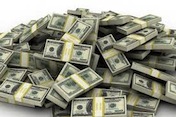Media

State Treasury: Soak the Rich
Last week the Pennsylvania state treasury tweeted a link to a New York Times opinion piece headlined The Rich Really Do Pay Lower Taxes Than You. The piece calls for a 60% tax rate on the wealthiest one percent of the population to fund a national progressive wish list: universal Medicare, universal pre-kindergarten, a renewable energy program and the like. It opens by misrepresenting the US tax system and proceeds from there.
The heart of the article is the graph below. It appears to show that the wealthiest people pay a lower tax rate than everybody else and that the rate they pay has fallen over time. Absolutely damning, right? Tax the rich, case closed? Not so fast.
The Times chart uses data from two economists, Emmanuel Saez and Gabriel Zucman, who are currently advising Elizabeth Warren’s presidential campaign and just published The Triumph of Injustice. Saez and Zucman are promoting a candidate and a book. Their data also aren’t checkable by the public.
In contrast, data from non-partisan sources that is easily checkable casts doubt on their claims.
Graph: tax rates graph from New York Times
Graph: federal rate on top 1% nearly unchanged
Graph: poor pay almost no federal tax
Graph: tax code is highly progressive
Graph: most collections are from the upper middle and above
Look Closer at The Times Chart.
Saez and Zucman prescribe higher taxes on the wealthiest 1%, a group of 3,000,000 people. According to the Times own graph, however, the number of people who are plausibly under-taxed is far less than that. As the circled part shows, the final two points on the graph represent only tiny numbers of people. The wealthier you are, the higher a tax rate that you pay on average: the top 0.01% (30,000 people) pay the highest tax rates according to the Times own data. The chart also indicates that the poorest people give 25% of their income to the government, which is wrong on its face.
Detailed critiques are also available. Bloomberg News directly challenged the Times with a column titled The Rich Really Do Pay Higher Taxes Than You (emphasis added). A key takeaway from the article is that the data points on the left-hand part of their chart are wrong: they need to be netted against the benefit payments low- and middle-income people receive. That correction alone makes the yellow line much steeper than the Times draws it.
Jason Furman, a member of Barack Obama’s Council of Economic Advisors, weighed in on Twitter with some charts, simply stating “The standard data shows that the tax system is overall progressive.”
The Cato Institute responded to the Times column with a write-up titled “Higher Incomes, Higher Tax Rates.” They link to a detailed comparison of Saez and Zucman’s research with that of others, pointing out that the two researchers’ results are the product of highly specific assumptions. Cato also points out problems with the researchers’ older work. A third-party review of the 2018 World Inequality Report, which Saez and Zucman co-authored with Thomas Piketty and others, described their data as “sparse, inconsistent, and unreliable” and “not very consistent with other reputable sources.”It also warned of interpolations that were “beyond heroic.” Perhaps they’ve improved their practices since.
What About the 400?
The most interesting part of the Times graph, the one intended to provoke outrage, is the right-most data point representing America’s 400 wealthiest households. “The 400” will probably become a 2020 campaign meme.
Most of the wealthy in this country are frugal retirees, not oligarchs. Advocates of higher taxes know this, so they’ve begun focusing on a better political villain than the merely wealthy: “The Wealthiest 400 Families.” The problem with singling out 400 families, though, is that they are not representative of anything in a country of 300 million people. Also, without special access, how does one get accurate tax information about such a private group?
It doesn't make for Times clickbait but there are reasons why a family’s taxes might appear low. One is double taxation. Payments to an individual from a business he owns get taxed first at the business level and then again at the individual level. For example, when the owner of a corporate business earns $1 of profit and pays himself a dividend out of his business he pays a 21% corporate tax rate and a 20% dividend tax. Overall his $1 earnings were taxed at about 36% ($1 x 80% x 80% = $0.64).
Taxes are Too High on Everybody.
The US tax system is indeed objectionable, but not for the reasons the Times article gives. What ought to be striking is that according the Times’ chart everybody in every income bracket pays a 20-30% combined tax rate. All of us are working for months on end just to pay the government. On this matter, however, the Pennsylvania treasury is likely to stay silent.